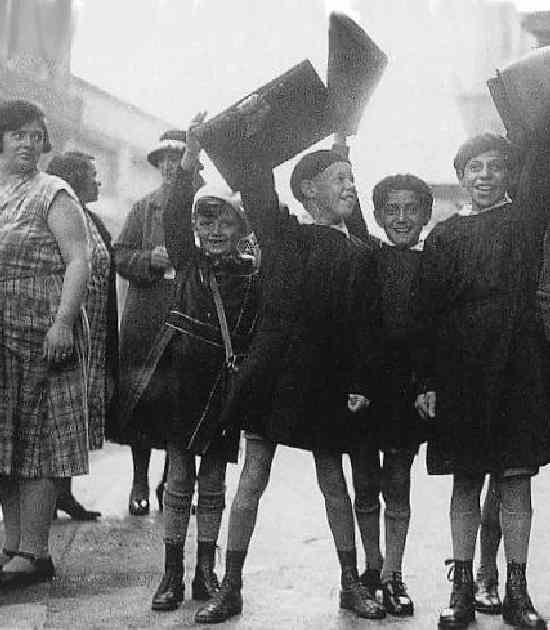
Figure 1.--French school boys still commony wore berets in the 1920s. They generally wore black berets, but note one boy here wears a white or light colored one. |

|
French school boys until the 1950s also commonly wore berets. HBC does not have information specifically on school berets. In fact they were for the most part not school berets as such simply berets worn to school. A few private schools, however, did have formal school berets. And a few schools without uniforms had uniform caps as was the pattern in Germany. While the beret is often associated with French school boys, other headwear such as sailor hats and caps, toques, and calots have also been worn. HBC at this time has only limited information on the headwear worn by French boys to school, but we have begun to acquire more information. Since World War II, headwear of all types have declined in popularity, including the headwear worn to school.
French school boys until the 1950s also commonly wore berets. HBC does not have information specifically on school berets. In fact they were for the most part not school berets as such simply berets worn to school. A few private schools, however, did have formal school berets. At this time HBC does not have a page on French school berets, but a great deal of infiornation is available on the main HBC French beret page.
A French reader tells HBC that "calot" is a common word for headwear used for both militaty and school boy caps. It has been used for a wide variety of styles including berets. "Calot" was the most common term used by French school boys to describe their headwear. Today the word is no longer commonly used because boys do not wear berets or often any headwear to school.
Many French boys at the turn of the century wore sailor suits to school. We believe that before World War I that many French schoolboys wore sailor caps and hats to school. We cannot yet, however, comfirm this because of our limited archive. We assume that they also wore sailor hats and caps. This is confirmed by the limited photographic evidence we have acquired at this time. Not all French boys wore smocks to school and even some of those that did wore sailor suits under their smocks. Of course some boys wore sailor headwear even when not wearing sailor suits.
Some schools had uniform headwear, almost always caps. We do not know of any school uniform hats, but this is not an impossibility. Bur it is clear thst if the school did set uniform headwear, it was almost always caps or in a few cases berets. This included both schools with uniforms and schools which did not have uniforms. Quite a few French schools had uniforms in the late-19th and early-20th centuries. This became much less common after World War I. We note a few schools that had uniform caps, but where the boys did not have uniforms. As far as we can tell, this was not very common in France, but we do find some examples. This approach was much more common in Germany. And as in Germany we no longer see it after World War II. The styles we note are almost all peaked military-style caps, somewhat similar to the German school caps. We are not sure if other styles were worn. Our French archive is still limited so we can not yet make any definitive statement about the cap styles. We believe a few private schools had British style caps and uniforms in the mid-20th century, but can not yet confirm this.
HBC does not yet have information on French school "toques". We believe that they were worn at some Catholic schools after World War II when the beret had declined in popularity. Some information is available on the toque at Belgian schools. The word "toque" is also used to describe the high white headwear worn by chefs in fancy restaurants. A Ftrench reader tells us that the word was also used by French boys to describe their berets in a slightly funny sense.
French school childrten commonly wore caps until after World War II. While French schoolboys are best knon for their berets, available images from the 1920s show that a range of caps were worn in the 1920s and not just berets. We are less sure about what besides berets were worn before World War I. When berets declined in popularity after World War II, many boys began attending school without wearing caps.
Related Chronolgy Pages in the Boys' Historical Web Site
[Main Chronology Page]
[The 1880s]
[The 1930s]
[The 1940s]
[The 1950s]
[The 1960s]
[The 1970s]
[The 1980s]
[The 1990s]
[The 2000s]
Related Style Pages in the Boys' Historical Web Site
[Main French school uniform page]
[Main country page]
[Long pants suits]
[Short pants suits]
[Socks]
[Eton suits]
[Jacket and trousers]
[Blazer
[School sandals]
Navigate the Boys' Historical Clothing School Uniform Pages
[Main French school garment page]
[Main School Uniform Page]
[Australia]
[England]
[France]
[Germany]
[Italy]
[Japan]
[New Zealand]
[Scotland]
[United States]
Navigate the Boys' Historical Clothing Web Page
[Introduction]
[Activities]
[Biographies]
[Chronology]
[Clothing styles]
[Bibliographies]
[Contributions]
[FAQs]
[French glossary]
[Images]
[Links]
[Registration]
[Tools]
[Boys' Clothing Home]
